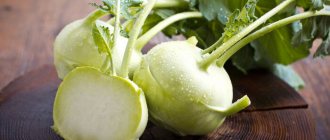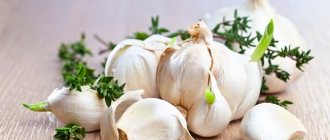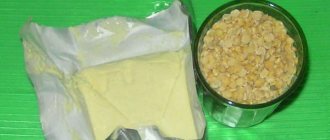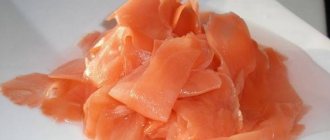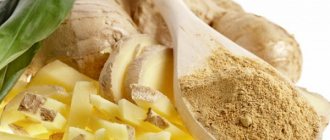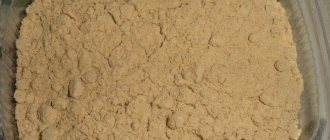How do they get it?
It all starts with catching fish. Pollock is mainly caught in the basins of the Okhotsk and Bering seas. High-quality caviar is produced in the Far East.
The fish are taken out of the water using huge seine nets. After that, it undergoes processing: it is cut up in factories. A large number of people are involved in the process. Roasters are removed from the carcasses - bags containing caviar inside. They then become raw materials that are subject to further processing.
The eggs are freed from the film in which they are located (this process is called punching). The pure product is then salted, packaged in jars and prepared for sale.
Composition and properties
Pollock caviar is rich in protein, while it is low in fat and practically no carbohydrates. This product has a rich vitamin and mineral composition. You can familiarize yourself with the table, which indicates the nutritional value, vitamins and elements contained in 100 g of salted caviar.
| Proteins (g) | Fat (g) | Carbohydrates (g) | Calorie content (kcal) | Vitamins | Elements |
| 28 | 2 | 1,1 | 120-140 | A, B1, B2, B6, B9, C, E, PP | Iron Potassium Calcium Magnesium Sodium Phosphorus Fluorine Sulfur Molybdenum |
Photo of pollock caviar
We recommend reading:
Properties of sardines: composition, calorie content, properties and features of use in the dietThe benefits of catfish: harm, composition, calorie content and features of preparing healthy fish (125 photos and videos)
The benefits of mackerel and contraindications to its use: 110 photos of useful qualities and features of eating fish for the body
Read here - Properties of sardines: composition, calorie content, properties and features of use in the diet
Beneficial features
With this seafood, the human body receives Omega-3 polyunsaturated fatty acids, which it does not produce itself. They ensure normal blood flow in the vessels, and the platelets inside do not stick together. Omega-3 fatty acids are important for preventing heart attacks and strokes. In addition, they help remove bad cholesterol from the body and prevent its accumulation.
The product contains a significant amount of nicotinic acid (also known as vitamin PP). This substance helps prevent the development of pellagra, the so-called “three D” disease. Its symptoms are dermatitis (skin disease), diarrhea and dementia (mental decline). Vitamin PP is important for stabilizing blood supply to the brain.
Everyone needs phosphorus - both adults and children - to strengthen bones, and this element is also useful for the organs of vision.
Caviar also contains calcium, which is also important for healthy bones and teeth. The product also contains a lot of protein, which promotes the formation of new cells and tissues in the human body.
Harm and contraindications
When canning, seafood is processed and becomes very salty. For this reason, doctors do not recommend eating it if you have chronic kidney disease or kidney failure. It is better not to eat it if you have urolithiasis, since it is important for patients to follow a diet with limited salt. Salted caviar is contraindicated for people with hypertension, those who have had heart attacks or have a predisposition to diseases of the cardiovascular system.
Expert opinion
Olga Nikolaeva
And, of course, in any form it is harmful for people with allergies to seafood and those with individual intolerance.
Harm
Rational inclusion of the product in the diet brings only benefits. It is still not necessary to abuse it due to its high calorie content, protein composition and fat content: the product is very nutritious and can cause weight gain. In addition, due to the deterioration of the environmental situation and widespread water pollution with various wastes, including radioactive ones, the quality of fish does not improve and is completely dependent on the environment.
Individual cases are also possible: intolerance to the product or its components, resulting in allergic reactions.
How to cook and serve?
Traditionally, this product plays the role of a snack that can be spread on bread or complement the taste of other dishes. According to the rules of serving, it is customary to place it on the table for guests in a special bowl - a caviar bowl.
For breakfast, you can prepare an original pasta with seafood, which can easily be used to make sandwiches. Here's her recipe.
Ingredients for 2 servings:
- pollock caviar – 2 tbsp. l.;
- butter – 50 g;
- lemon juice - to taste;
- dill, parsley, cilantro - to taste;
- salt pepper.
How to cook:
- Chop the fresh herbs as finely as possible.
- Add 2 tbsp. l. pollock caviar and stir.
- Pour in a little lemon juice.
- Mix with soft butter.
- If necessary, adjust the taste with salt and pepper.
- Spread the paste on the bread.
- If desired, you can put thin slices of fresh cucumber and tomato on top.
The salty canned product is added to salads. They can be stuffed with olives, for example, and then placed as an addition to sliced fish. Fresh fish caviar is placed in soup or fried in the form of small flat cakes with flour and egg.
Benefits for children
Please note: caviar can be given to a child no earlier than 3 years old. This product may cause allergies and also contains a lot of salt.
But you can introduce your baby to fish much earlier: already at 8-9 months. Pollock is perfect for the first try, as it is a low-fat fish. But up to 10 months, the child’s diet should only include puree made from skinless fillet. To do this, boil the fish for a quarter of an hour, cool, then blend in a blender, removing the bones. You need to start with a quarter teaspoon, and then pay attention to the baby’s reaction. Sometimes allergies occur to a certain type of fish. If a skin rash or eating disorder occurs, you should temporarily stop introducing your child to pollock. But after a couple of weeks, after the condition has returned to normal, you can try another type of fish. If there was no negative reaction, you can give your child pollock a couple of times a week, and from 10 months you can offer the fish in the form of small pieces.
Pollock is rich in protein and also contains an amino acid called lysine, which is important for the growth of a child’s bones. Calcium and phosphorus, which are found in fish, are also beneficial for bones.
Pollock is also very useful for older children. Saltwater fish contains iodine, which helps maintain good memory, and Omega-3 fatty acids in fillets and caviar help brain function and promote the formation of new branches of nerve cells in the brain. This type of fish is also useful for the prevention and treatment of anemia.
Salted pollock caviar: benefits and harms
If you want to diversify your home menu and make it healthy, be sure to pay attention to pollock. You can use not only fish fillets, but also caviar to prepare various dishes. These ingredients make extremely tasty appetizers, salads and main courses.
The component composition of pollock can be called surprising. This is precisely what is associated with the benefits of such seafood.
Useful properties of caviar:
- strengthening the heart muscle;
- prevention of the formation of cholesterol plaques;
- reduction of harmful cholesterol levels;
- normalization of metabolism;
- stabilization of blood pressure levels;
- improvement of general well-being;
- increased physical activity;
- improved mood;
- increased mental abilities;
- prevention of viral and acute respiratory diseases;
- normalization of hematopoiesis;
- improvement of visual function;
- improving the functioning of the thyroid gland;
- improvement of digestive processes;
- replenishment of iodine deficiency;
- removal of salt deposits, waste and toxins from the body;
- normalization of blood sugar concentration;
- strengthening bone tissue.
And again it is necessary to turn to the component composition of pollock caviar. Thanks to the content of ascorbic acid, the immune system is strengthened. In addition, micro- and macroelements help strengthen cartilage tissue and tendons. This product is also very useful for metabolism. The process of carbohydrate metabolism is activated, fats and proteins are absorbed better.
Some experts say that eating pollock caviar has a beneficial effect on the body at the cellular level, the processes of premature aging slow down, and damaged skin regenerates faster.
On a note! Eating pollock caviar serves as a preventive measure against the development of malignant processes.
Specialized doctors advise including such a product in the menu for people who have undergone surgery. You should also eat pollock caviar during pregnancy, since the product is enriched with folic acid.
In the modern world, more and more people are faced with the same problem - iodine deficiency in the body. This mainly concerns residents of regions remote from the sea coast. Pollock fillet and its caviar will help compensate for the lack of iodine.
Experts are still arguing about the benefits and harms of pollock caviar. Many doctors are convinced that caviar product is incredibly beneficial for the nervous system. You need to eat it almost every day in case of psycho-emotional shocks or stressful situations.
The composition of caviar is enriched with B vitamins. General well-being improves, the nervous system is strengthened, and all metabolic processes are normalized.
Pollock caviar can be safely called a dietary product, since it does not contain carbohydrates. But there is plenty of protein in this treat, which makes it indispensable in the diet of athletes and people exposed to intense physical and mental stress.
How to pickle at home?
If you happen to have eggs with pollock caviar at home, you can salt it yourself. For 500 g you will need:
- 2 tbsp. l. with a heap of salt;
- 1 l. water;
- 2 tsp. olive oil;
- pepper, cilantro, dried garlic and (or) other spices to taste.
To prepare the brine, pour salt into the water and put on fire. When the solution boils, hold for another minute and remove from heat.
While the water and salt are heating up, it is necessary to clean the eggs from the film. There are 2 ways to do this.
- Rub through a sieve. Imagine using it like a grater. Using the same movements as if you were grating spaghetti cheese, but not too quickly and carefully, separate the caviar from the film.
- Wait until the solution boils. Pour it into the jar. Stir for 5-7 seconds until the water completely covers all the eggs. Then, using a fork or whisk, continue stirring and remove the film, which should easily float to the surface on its own due to the high temperature.
If you use the first method, then after punching - this is the name of the process of getting rid of the film - you can fill the mass with a ready-made saline solution. Mix thoroughly and leave for 10 minutes to salt.
If you use the second method, remember that the time of salting the product in the solution should not be more than 10 minutes.
After the caviar has been salted, take a sieve and place gauze inside it. Place a container under the sieve. Strain the salted mass, stirring it until the water drains completely.
Leave to cool.
Place a teaspoon of olive oil in the prepared container. Then place the caviar mixture there and place a second spoon of oil on top. You can add spices. Afterwards, mix everything, close the lid, and put it in the refrigerator overnight.
The next morning the product can be eaten.
Is it possible to eat?
During pregnancy and breastfeeding
During pregnancy, especially in the first trimester, eating this seafood is beneficial. This is due to the fact that it contains vitamin B9 - folic acid, which helps the fetus to develop properly. Maintaining its normal amount in the body is important for the prevention of various pathologies associated with the development of the child’s nervous system.
Still, you shouldn’t get carried away with this product. Due to its high salt content, it can cause swelling. And, of course, before including it in the diet of the expectant mother, you need to check whether there are any contraindications for use, such as kidney disease, high blood pressure or allergic reactions.
When breastfeeding, you can start introducing caviar into the diet when the baby is six months old. This happens according to the standard scheme: first you need to eat a small portion and observe the child’s reaction for two days. If no allergic reaction occurs, you can continue to treat yourself to this seafood product from time to time.
During the diet
Pollock caviar is a dish with average calorie content. A couple of times a week in the amount of 100-150 g it can be safely introduced into the diet. Before you do this, check the composition: it should not contain additional ingredients other than the seafood itself and salt.
The presence of two preservatives is allowed - E200 and E211 - they help preserve the product. And be sure to once again pay attention to the calorie content indicated on the packaging.
For diabetes
Doctors' opinions are divided on whether caviar can be eaten if you have diabetes. In general, they agree that this is a prohibited product. But some experts believe that caviar can be consumed occasionally in minimal quantities. But only red.
We can conclude that pollock caviar should be excluded from the menu if you have diabetes. You can ask your doctor's opinion on this issue to get more accurate recommendations.
For gastritis and pancreatitis
It is not recommended to eat seafood with gastritis, especially when salted. In this case, it will need to be excluded from the diet.
For pancreatitis, this type of caviar is also on the list of prohibited foods, as it contains a lot of salt. Preservatives in caviar, which is sold in stores, also have an adverse effect on the inflamed pancreas.
What benefits does the delicacy bring?
Caviar, served on the table in any form, will allow the body to fully absorb the protein. The vitamins and minerals it contains will also be processed in full.
Here are the positive effects you can expect when consuming this fish delicacy:
- Fish oil product reduces the likelihood of heart disease, improves the functioning of blood vessels and the thyroid gland.
- The circulatory system is .
- During prolonged work that requires great concentration, visual acuity becomes better, and the eyes stop drying out .
- The restoration of tissues and mucous membranes occurs faster.
- Due to the high calcium content, bone tissue is strengthened.
Nutritionists recommend consuming pollock delicacy for the following diseases or conditions of the body:
- Anemia.
- Decreased performance of the thyroid gland.
- Pathologies of the heart, blood vessels, atherosclerosis.
- When there is a deficiency of vitamins in the body.
- During pregnancy and breastfeeding.
- During intensive growth of a young organism.
By regularly adding pollock to your diet, you can achieve the following positive health benefits:
- Strengthening the immune system, increasing resistance to colds and infectious diseases.
- Removing toxins and waste from the body.
- Normalization of the functioning of the gastrointestinal tract, improvement of intestinal microflora.
- Favorable effect on increasing potency.
- Giving elasticity to blood vessels.
- Improving memory and brain function, coordination of movements.
- Reducing the risk of cancer.
The delicacy can be consumed just like that, in its “pure” form, or you can prepare salads, sauces and, of course, sandwiches with it. Experts advise all adherents of a healthy and wholesome diet to pay attention to this delicacy, including it in their diet. The recommended daily intake is two tablespoons. 2-3 times per week .
Fish food from pollock will benefit both the elderly and children, as well as anyone who has suffered from illness to quickly bring the body to a normal rhythm.
How to choose a quality product?
On the jars you can find the inscription: “Salted pollock caviar.” What does the word "breakdown" mean? The fact that it is cleared of the film in which it was located inside the fish.
The composition may also contain salt, oil and preservatives. Only two are allowed: E200 and E211. Without these additives, the product simply will not survive.
When choosing, you can try pressing on the lid of the jar. It should be pressed in tightly. If you hear a pop, this is a bad sign: the product inside has already begun to deteriorate.
It is better to choose seafood in transparent packaging. This way you can judge its quality by its appearance. The mass inside should have a light beige, slightly pinkish tint. It should have a moderately viscous consistency, lie tightly in the jar, not dangle or spread. The eggs inside should be visible.
How to store it correctly?
This product should be refrigerated according to the expiration date indicated on the package. After opening, the shelf life in the refrigerator is 36 hours.
Salted pollock caviar can be frozen. If you prepared it at home yourself, it is best to divide it into containers or jars in portions. It is important that the jar is completely filled and there is no air left in it. When you decide to take it out, you will need to defrost the product in the refrigerator for 24 hours. It cannot be re-frozen.
Please note: after freezing, caviar may lose its original appearance.
What is the chemical composition?
Today, on almost every corner they talk about the benefits of salted pollock caviar, and in any supermarket you can definitely find canned pollock caviar on the most prominent shelf.
If we talk about the dangers and benefits of this seafood, we can compare it with fish fillet. To fully appreciate all the pros and cons, it is important to study the chemical composition of pollock.
Such fish are mostly found in Atlantic and Pacific waters. It is usually classified as a cod fish. Almost always located at the bottom. This fish feeds on small shellfish.
If you look at the mineral composition of fish fillet, you will be pleasantly surprised, so the benefits of pollock caviar for women are undeniable.
